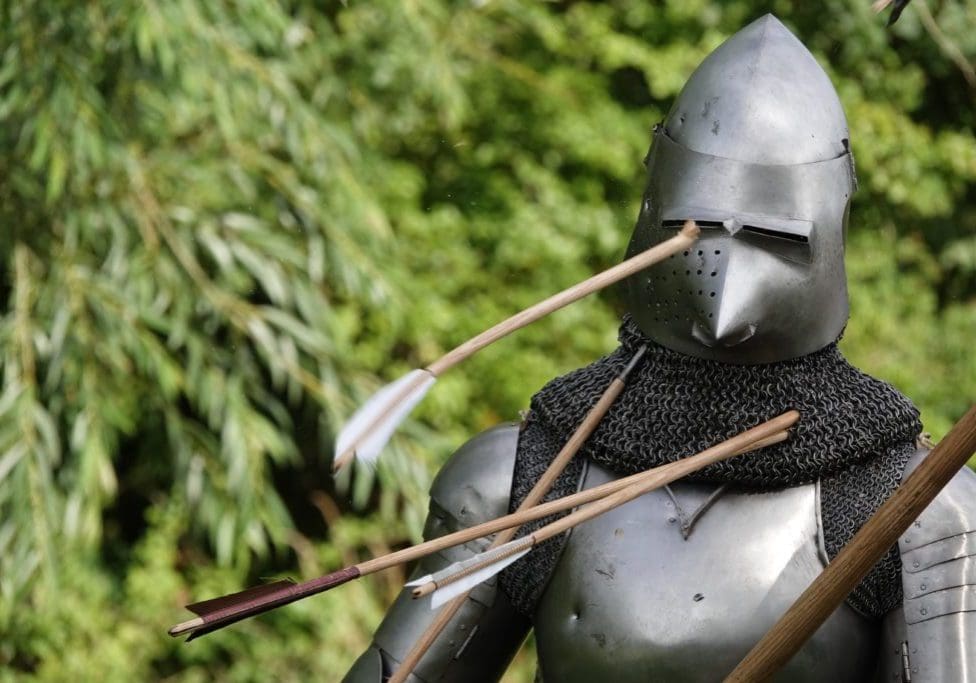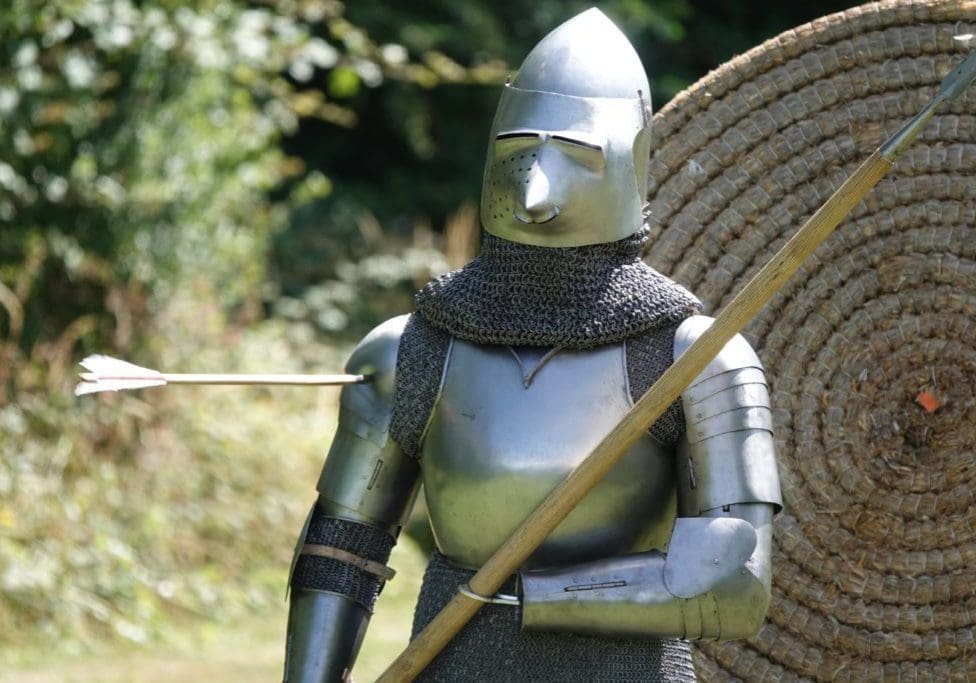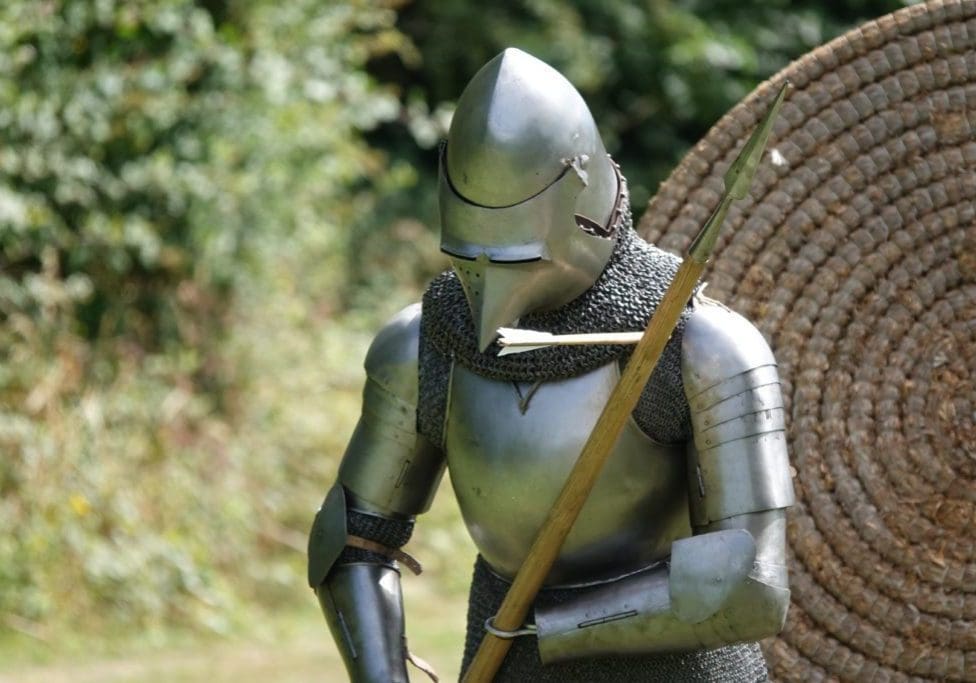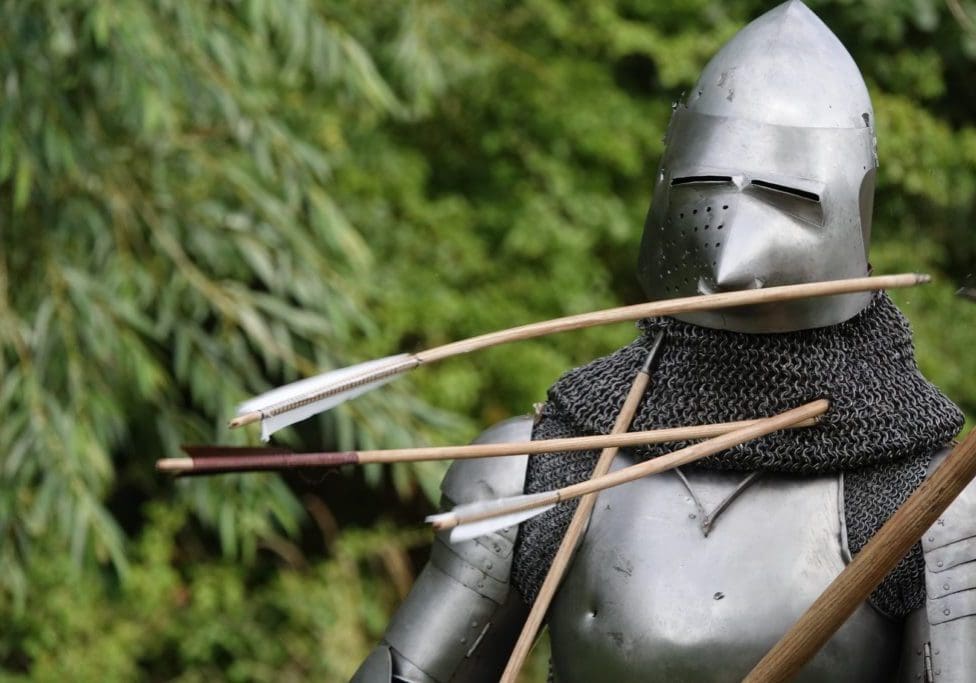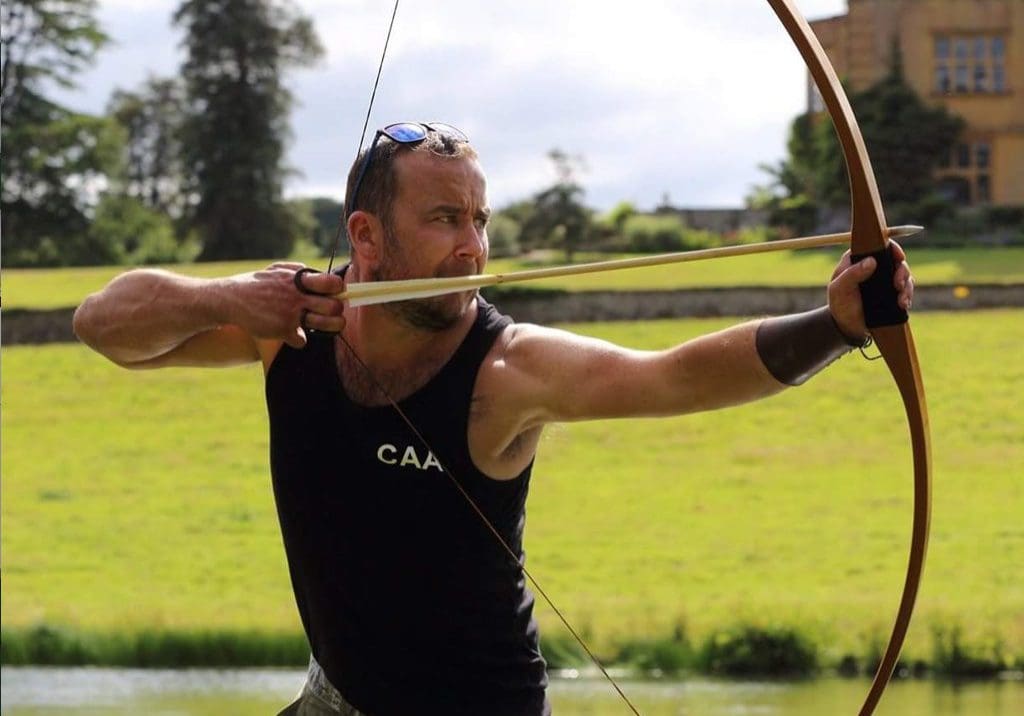Arrow head material test
Arrow head material test
What head material?
Different heads were in use at the time, and we may well come back to look at different head types in future films, but the purpose of this film is to look at the heads we are using for the main AvA2 film; which are type 9 bodkins based on A5698 from Museum of London.
We chose this head type because it was very common to the period, it is seen in the artwork, found on the battle fields and our museums are full of dated examples, but it seems to have been predominantly made from soft iron, not from steel. Steel in arrow heads at all is rare, but where it is seen it is usually on type 16’s, the military bladed/barbed heads. A very few bodkin heads are either made of steel or have steel in the tips, but this is unusual even though there were several laws apparently instructing them to be steel. And you don’t need to pass a law a second or third time if it is being obeyed the first time….
What we try to do in the AvA films is to use the ‘normal’. The equipment that was common and soft iron heads were undoubtedly common so that is what we will be using for our film. We are not trying to defeat the armour at all costs, we are trying to find out what usually happened, but of course they did sometimes have steel heads and they certainly knew about case hardening, so we should look at that too in case it radically changes the outcome and it can also inform our thoughts.
The arrow shafts are all the same, they are 12mm/31″ bob tailed ash shafts with 7.5″ fletchings. The heads are all different….
The soft iron ones are the same as we will be using in our main film and are made from wrought iron; water quenched and were very common.
However case hardening is a process they knew about and is easy in bulk. It converts a thin skin of the iron to a very hard steel. There is no evidence they did this, but if it improves penetration it would be an ‘easy fix’ and also it is not possible to discover if corroded excavated ones had a case or not; so it is plausible they did. Our case hardened ones have also been made from wrought iron and case hardened by an ISO 9001 registered company.
Documents of the period refer to arrow heads that are ‘steeled’ as well as ‘steel’, it is of course hard for us to work out exactly what they meant as meanings change over time, but it does seem there were two differences so perhaps one was case hardened and the other was fully steel or steel tipped. So the third arrow head type is fully of steel.
The steel used is bloomery steel provided by Owen Bush and has been forged by Will, normalised twice, the heads have been water quenched and the tips drawn back to straw colour, leaving a soft socket and a very hard but tough head. Interestingly these heads took Will around 3 times longer to make. Working the steel is slower, but then the heat treating and tempering is extra work to usual and the grinding is slower.
These are our three possible medieval options but we are lucky that we have been funded and can use these very expensive heads, so we have also provided mild steel heads to see if there is a difference and provide a reference.
So we have four heads to test. All type 9 bodkins, all on ash shafts. Soft iron, case hardened iron, full bloomery steel and mild steel.
The test itself is simple and is really just to show the penetrative ability of each head type so we can compare one against another. On this frame is a 45cm x 45cm x 1.2mm mild steel sheet and behind it and touching it, supporting it, is archery foam. The steel is thin enough that we know the arrows will pass through, but it takes energy to do this so the arrow will slow. But some energy is left and so the arrow will keep moving forward into the foam. The more energy left (the better it cuts through the steel) the further through it will go. We are using the sheet to show the relative difference, we are deliberately not using shaped armour as this would add a variability into the experiment.
We shoot 3 arrows of each type and look and comment on the results.
Conclusion
Notes
Realistically needs to be done in about 2.25 hours
Rob on main camera, Mike on Chronos and GoPros, Jon on reportage, Augusto on Panasonic (on tripod)
Front of camera crew to be Will and Tod. Joe is shooting
Big target so it will be easy for Joe.
Shoot from 15m
Joe talks a bit, but is mostly the other three
Chronos will need to be close so we will need a side shield and a camera shield. Camera shield will have the option to fit a 8mm laminated glass plate or wooden plate with through hole for the lens. I think the chance of metal lens damaging shrapnel is very low so I think we can use a hide with a lens hole for the chronos.
Back up the Chronos with a GoPro from the front and another from the rear as the arrows come through.
Infrastructure/kit
- Solid hide
- Camera hide
- 2 x go pro
- 1.2 x 1.2m frame made from 50 x 50 x 3 angle faced with 50mm weld mesh with 50 x 3 cross 3 case hardened arrows. Stuart at Heat Treat 01604 586920
- 3 bloomery steel arrows
- 3 soft iron arrows
- 3 mild steel arrows
- 2 x 1.2m x 1.2m x 1.2mm mild steel sheet
- Steel frame target stand
- 3 x laminated glass sheets from ED glass 01993 772296

